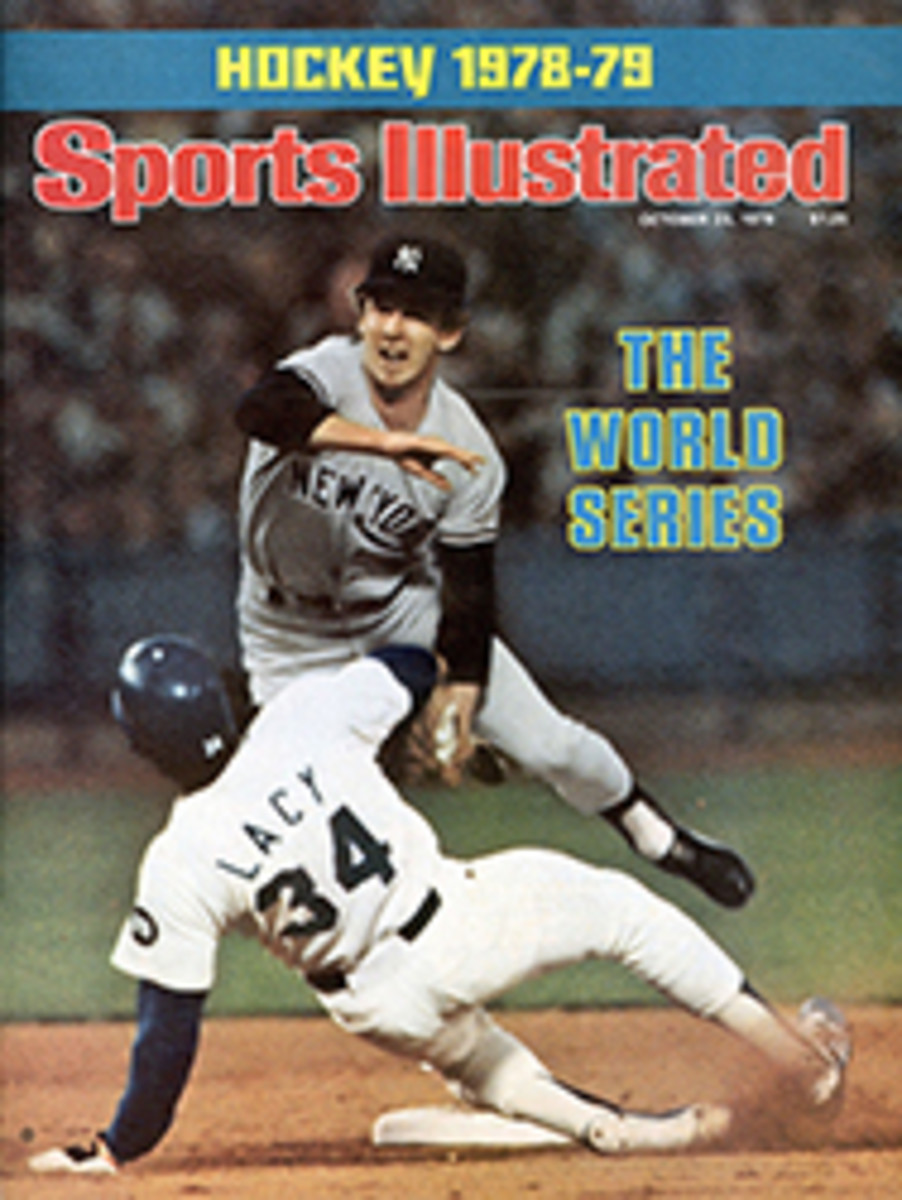
Slambang win in the slammer
Shaven head down, James Scott stared at his right hand. He closed it into a fist and studied its every ridge, marveling at the beauty of it as a weapon. Standing around him in the tiny office inside New Jersey's Rahway State Prison were a dozen or so friends, most of them inmates, all chattering nervously. Scott, studying his fist, ignored them. "We've only got four rounds," he said, almost as if he were instructing the hand. "Four rounds, or else we're in a lot of trouble."
In a nearby room, Eddie Gregory, the WBA's No, 1-ranked light heavyweight contender, was in much better spirits. He was in superb condition and the fight ahead would be no more than a tune-up on the way to a $50,000 title match with Mike Rossman, the new champion. Tonight, Gregory would get $15,000 for going 12 rounds against a guy who had been behind bars since 1975.
"They say Scott is tough," Gregory said, "but how tough can he be? So he fought a couple of stiffs inside the walls and he knocked them out. He hasn't had a real pro fight in almost four years. And now he wants to fight the top contender. You know he's got to be crazy. He's been in here too long. It happens when you stay in these places too long. I'll carry him for 11 rounds and knock him out in the 12th. It'll be a good workout."
Some workout. For James Scott, last Thursday's match might have been made in heaven, even though, more prosaically, it had been made in the warden's office. The prison had sanctioned the fight to highlight one of its many work programs and as a showcase for its progressive rehabilitation system.
"We've got dozens of important rehabilitation programs at Rahway, and boxing is only one of them," says Superintendent Robert S. Hatrak. "I admit that teaching inmates to become professional fighters—and cut men and trainers—is unique, but why not? If we can teach them to lay a brick or to build a house, why not teach them to box? One man takes a college course, another learns how to throw a jab. The result is the same. When they leave here they take something very important: a way to earn an honest living, a sense of self-respect, the tools to become a useful citizen."
The boxing program might have been made just for Scott. He is 30 years old, and except for two brief periods he has been behind bars since he was 13. He was first sent from the Newark ghetto to the Jamesburg Reformatory for truancy. Five years later he was declared an incorrigible and transferred to Trenton State Prison. That was in 1965.
At Trenton, Scott was befriended by Al Dickens, a onetime Army boxer now in the 16th year of a 51-year sentence for armed robbery. "When I first saw Scotty, he was a tough punk running around breaking heads with an iron pipe," Dickens says, "but I got him to thinking about boxing instead."
Scott appreciates that, but adds, "I guess I wasn't listening too close when Dickens tried to teach me about life. They let me out of prison on Nov. 5, 1968, and it wasn't long before I was back—busted for robbery—doing 13 to 17. That's when I really took up boxing."
Scott became the light heavyweight champion of the New Jersey prison system, destroying opponents until there were no more challengers. In 1974 he was released on a work-parole program. His work was professional boxing; his parole officer, in effect, was a Miami architect and fight figure named Murray Gabe, who offered Scott a contract.
Scott won eight fights in a row, developing a reputation for ferocity that again made opponents scarce. "It was a nightmare trying to find someone who would get in the ring with him," Gabe says. "It was horrible what Chris Dundee had to pay people to fight that animal." Then in May 1975 came the two breaks that were to change Scott's career. The good news was that he lined up a championship fight with John Conteh of Great Britain. The bad news was that Scott decided to return to Newark.
"I had it made," he says, "a title shot for $100,000. My dream had come true. A press conference was set up for a Thursday and we were going to announce the fight. On Wednesday the police picked me up."
A few nights earlier, Scott's car had been seen in the vicinity of a murder and robbery. When the Newark police checked the car they found bloodstains and a bullet hole. Scott said he had loaned the car to a friend. Held at first as a material witness, Scott was later charged with the robbery, which had netted $238. Found guilty, in March 1976 he was sentenced to 30 to 40 years. He was transferred to Rahway on May 27, 1977 as inmate No. 57735. He has been in training ever since. "Like a Spartan," says Dickens, who is now at Rahway, too, "and he sure wasn't out nights fooling around."
Starting last May, Scott would run for an hour in the prison yard each morning. Dickens estimates that, in all, Scott has run more than 900 miles—"and let me tell you, it gets boring with nothing to look at but the wall." During the same period, Scott did a total of 51,000 pushups, 16,000 sit-ups, punched the light bag nonstop for 30 minutes at a time and followed that up with 10 rounds on the heavy bag.
The real problem was a lack of sparring partners. Correction officials borrowed the heavyweight champ of Trenton State Prison, and Scott broke three of his ribs. "Enough of this," said Hatrak. "We can't have Scott busting up the prison population. No more inmates. We'll bring in someone from outside."
One such visitor was Junior Royster, who had fought Scott to a draw in Miami. Scott knocked him out and they never saw Royster again. J. C. Brown, a Newark heavyweight, agreed to work, but only three days a week and only three rounds at a time.
All of which accounted for Scott's preoccupation with being able to fight for more than four rounds. "It's a mental barrier," he says. "It's like a miler trying to break four minutes. You get afraid of it. You fear you can't do it."
On the night of the fight with Gregory, Scott got some final advice from Dr. Ferdie Pacheco, Muhammad Ali's former physician, who had befriended him in Florida. "Don't try to think out there," Pacheco said. "Fight by instinct. You are an animal caged up in here and you want to get out. Go out and fight like an animal, snarl like an animal, climb all over him like an animal."
Pacheco later recalled, "It was hot in that little room. But when I looked into Scott's eyes, I suddenly felt cold. I felt sorry for Gregory."
In the ring, Scott took charge from the start, swarming over Gregory at close quarters, firing punishing hooks from both sides. In the fourth round, he raised an ugly lump under Gregory's left eye.
"I threw everything I had at him," Scott said afterward, "but he's too smart. I knew then I was going to have to go the full 12, and I thought, 'Oh, oh, you better pace yourself.' "
Scott won the fifth round, then coasted through the sixth and seventh, which he lost on all cards. From Round 8 on, he resumed command and never let up. Always it was the same: inside and savage. At the end, with his corner screaming for him to go for a knockout, Gregory was barely able to hang on.
"From the third round on," said Scott, "he wasn't trying to win the fight. He was just trying not to get hurt."
The decision was unanimous; only the referee, Tony Perez, saw it close. He gave it to Scott 6-4 with two rounds even. Judge Harold Lederman had it 9-2-1 and judge Ernie Durando called it 9-3. And, naturally, the elated Scott called for a title fight with Rossman. "It won't go four rounds," he said.
On the way out of Rahway, Jimmy DiPiano, Rossman's father and manager, said, "It's going to take an awful awful lot of money before I'll let my son in the same ring with that monster."
PHOTO
Jubilant James Scott is congratulated by his old pal Dr. Ferdie Pacheco after defeating Gregory.

